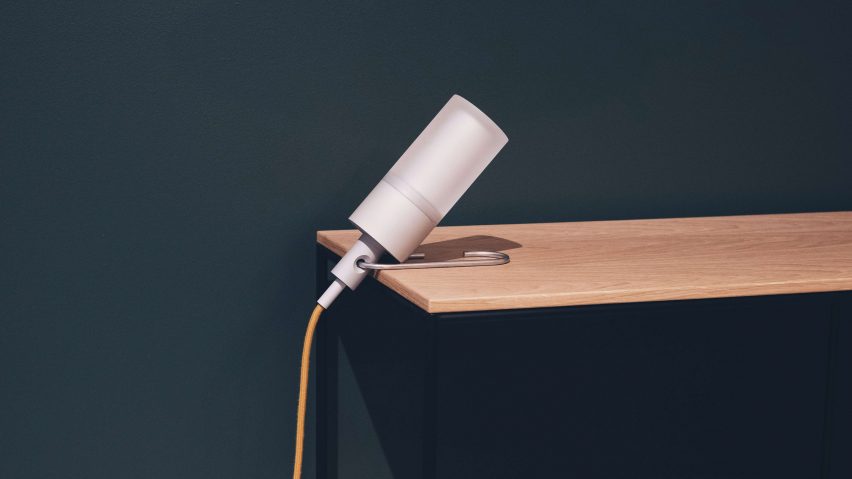
Lund University students design solar-powered lights to reduce our reliance on the grid
As part of Dutch Design Week, students from Lund University are presenting a collection of wireless off-grid lighting systems designed to showcase the benefits of solar power in different settings from street food stalls to refugee camps.
The exhibition, titled A light that never goes out, is on display in Eindhoven's Klokgebouw venue for Dutch Design Week (DDW) and encompasses nine projects that explore how photovoltaics can provide reliable, renewable energy in times of social and environmental upheaval.
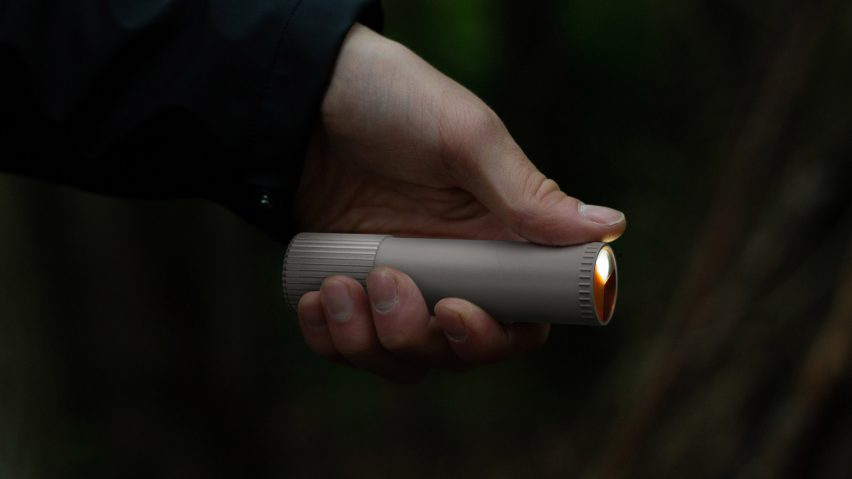
"With the growing frequency of extreme weather events threatening the security of our power grids, the importance of off-grid power solutions is becoming more apparent," Lund University said.
"Off-grid lighting has countless use cases, whether fulfilling essential human needs or delivering more convenient experiences."
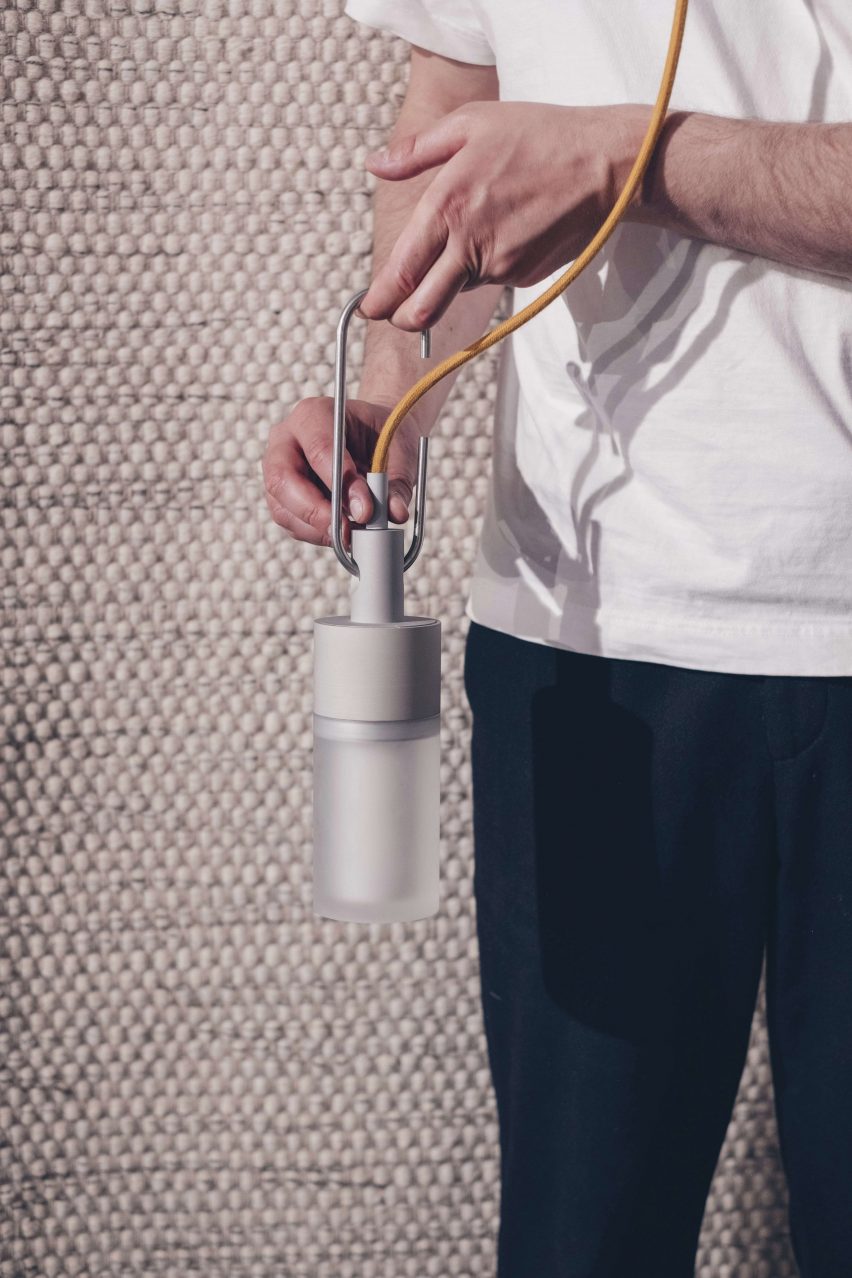
The prototype lights are fully functional, all the way down to the electronics and mechanics, but all bar one of them rely on external solar panels and battery packs for their power.
Each light was designed by industrial design students at the university to suit a different context, ranging from remote settings like campsites and music festivals to entire off-grid communities such as refugee camps and nomadic indigenous groups.
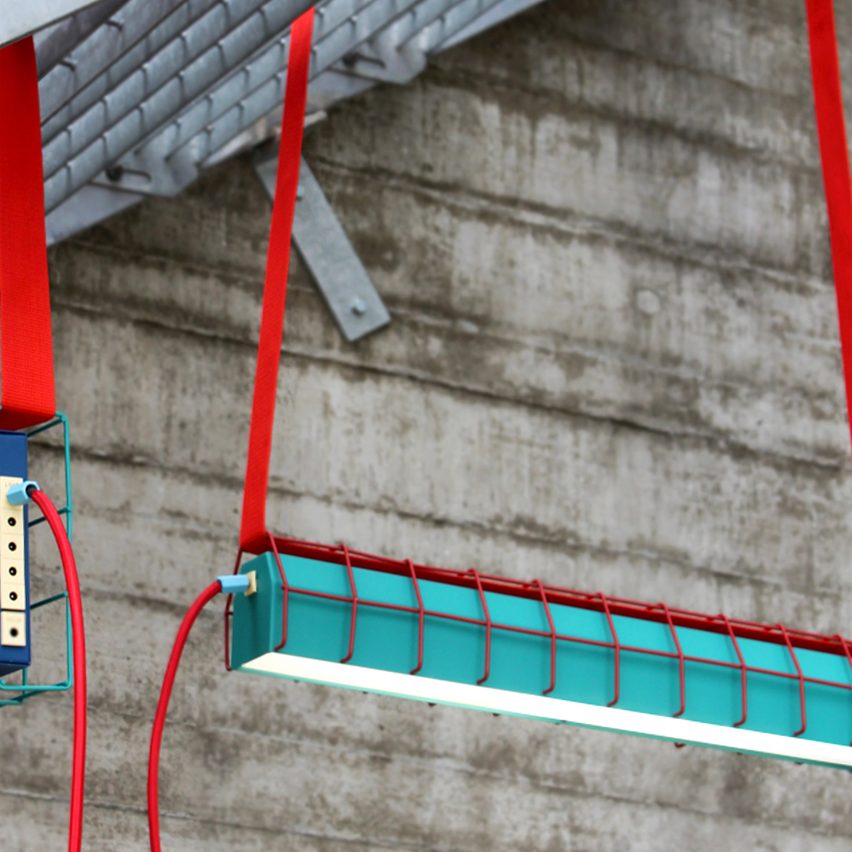
Other projects focus on providing energy security in emergency situations such as natural disasters or geopolitical conflicts like the Ukraine war.
"Problems around energy are really severe nowadays," student Ying Luo told Dezeen. "And solar is one solution for the future."
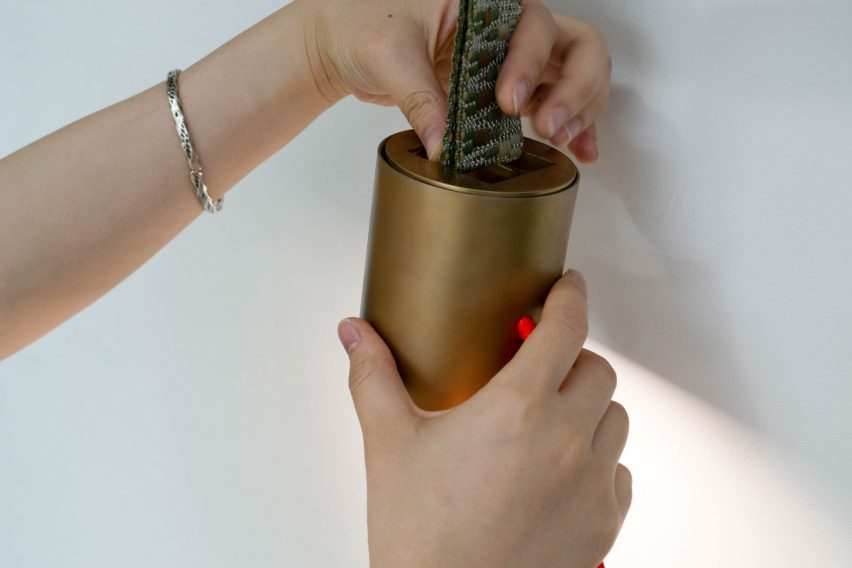
As part of the project, Ying collaborated with fellow student Elias Cox to create a lighting system tailored to the specific needs of the Bajau – a nomadic fishing community that lives on boats and stilted homes in the waters of Indonesia, Malaysia and the Philippines.
The duo's Pengembara system consists of a cylindrical light and a separate battery pack, with each attached to an adjustable strap. This allows them to be easily carried around during fishing expeditions or hung from structural poles inside their homes.
The battery is charged using a semi-flexible solar panel, which is lightweight enough to be strapped to the Bajau's thatched roofs using a line or rope.
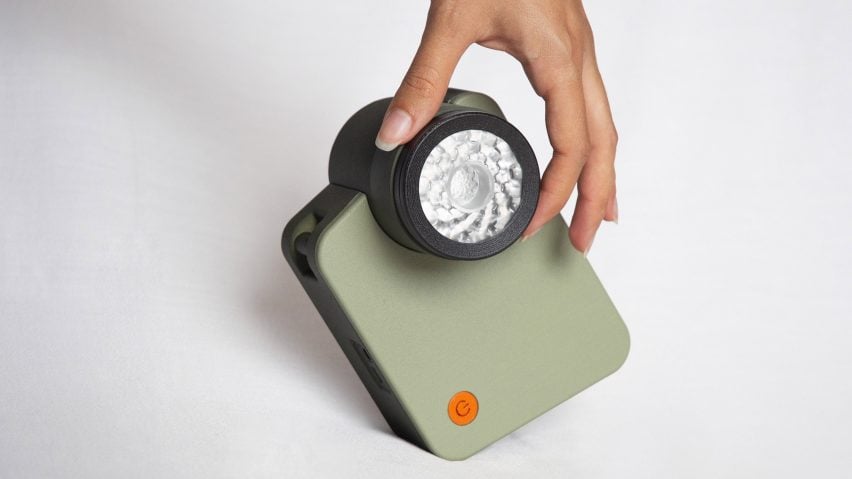
"At the moment, they often use kerosene lamps to provide light during the dark hours," Cox explained. "These lamps are a health hazard, have a negative environmental impact and are light inefficient. A solar lighting solution solves many of these issues."
Similar strap fastenings are used in the Off/On Grid system by Martina Claesson and Luisa Wirth, which was designed to be mounted on top of the stalls used by South East Asian street food vendors.
"This helps to light up their workspace but also the food," Cox explained.
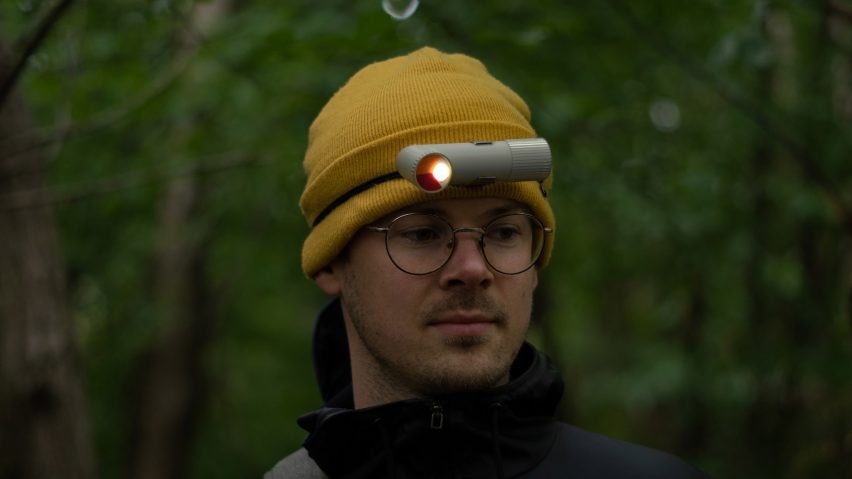
Nicolò Guanziroli designed his Eye lamp to provide a reliable light source in refugee camps, using a powerful battery pack to ensure up to 14 hours of use on a single charge.
Its light beam can be adjusted by twisting the lens, creating a wider beam for social gatherings and a narrower one for solitary activities like reading.
Another adaptable design comes from Nils Tarukoski and Linus Brorsson, whose lightweight camping light Stick has a twistable head that allows it to be used as a hanging lantern, a flashlight and a headtorch.
Twisting the lens also allows users to add a red filter in front of the LEDs to preserve their night vision.
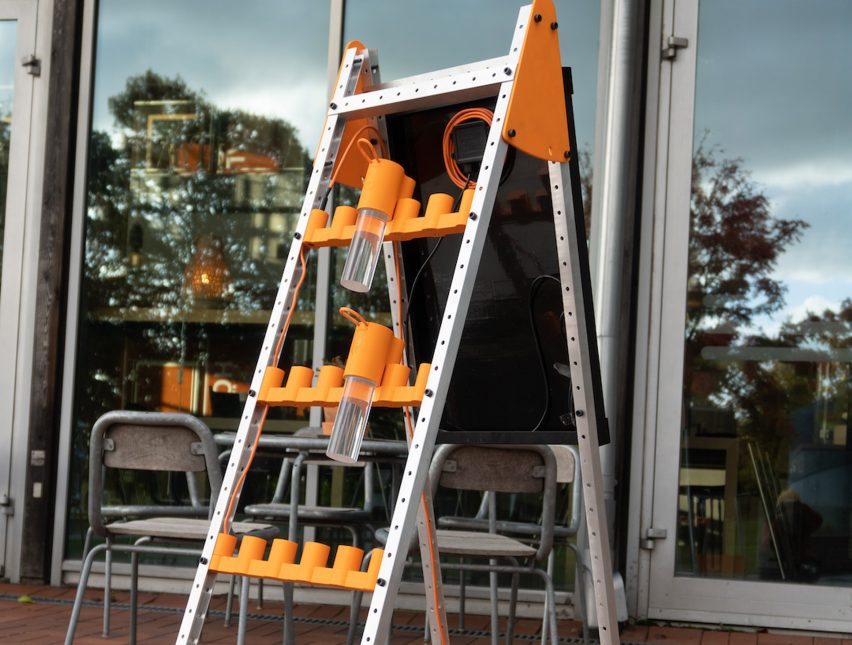
Portability is equally key in the Solar Buddies system, which Zahra Ghiasi, Jason Pi and Lucien Tirou designed for use at music festivals and other outdoor events.
The system consists of a ladder-like charging station, with a solar panel mounted on one side and up to 10 torch-like solar lamps docked on the other side, which attendants can borrow to find their way around in the dark.
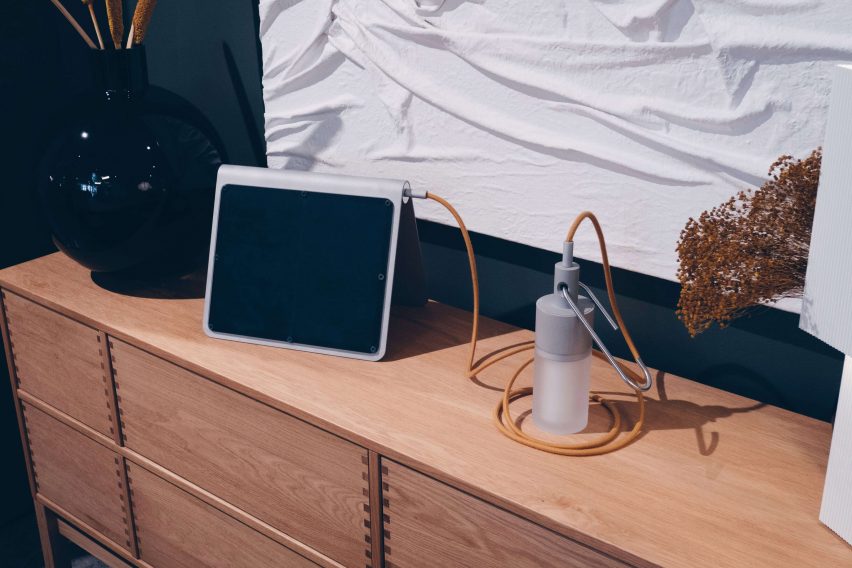
Several other student teams integrated hooks into their designs, so the lights can either be carried around or hung up as needed.
This includes the indoor-outdoor Lumod light by Hannes Laurin and David Wenner, as well as the Lighthouse lantern by Jacob Alm Andersson, which was designed to facilitate everyday tasks and social activities during power cuts.
The Lykta light by Ludvig Djerf and Leo Olsson doesn't just come with a hook but also with an L-shaped solar panel that can be wedged onto a balcony railing to make solar power accessible for people living in small apartments.
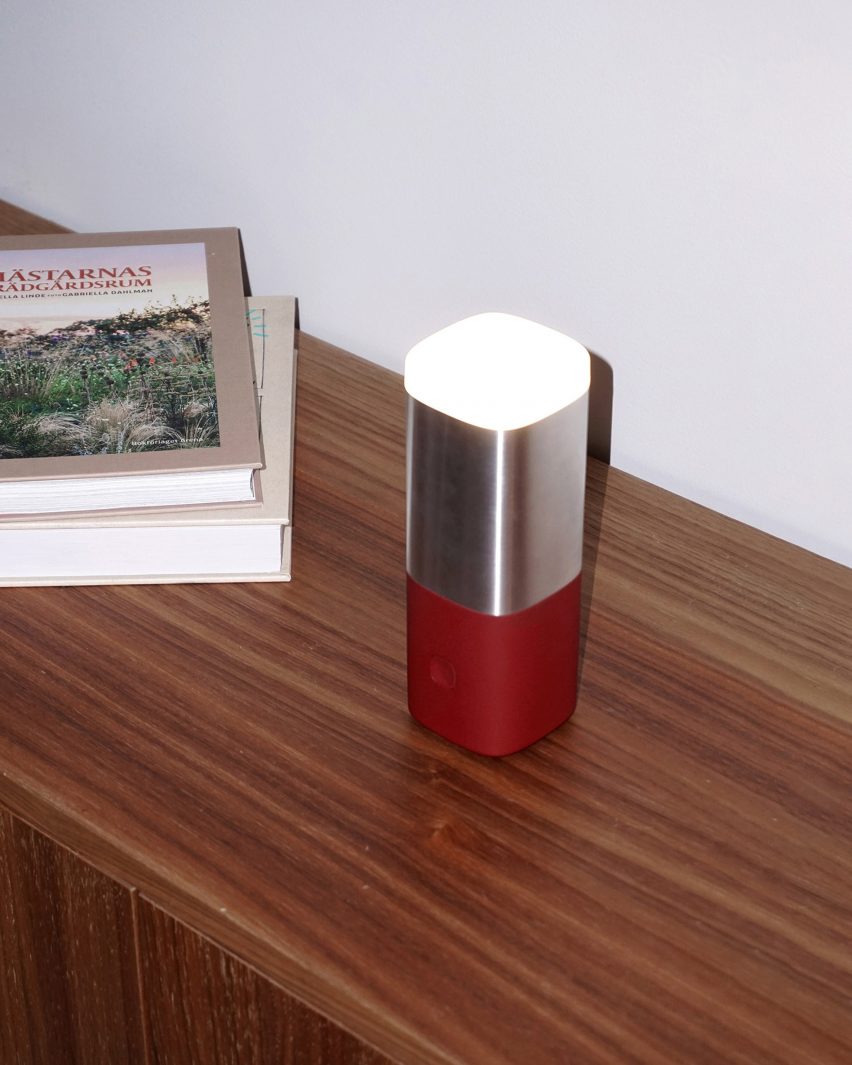
The only lighting design with photovoltaics integrated into the product itself is Solar Object by Zhijian Xiong and Junhan Zhang, which the designers describe as a "brutal yet mobile" flashlight.
"This is one is more conceptual," Cox explained. "It's about explaining the process of how solar works and how sunlight is transformed into electric light."
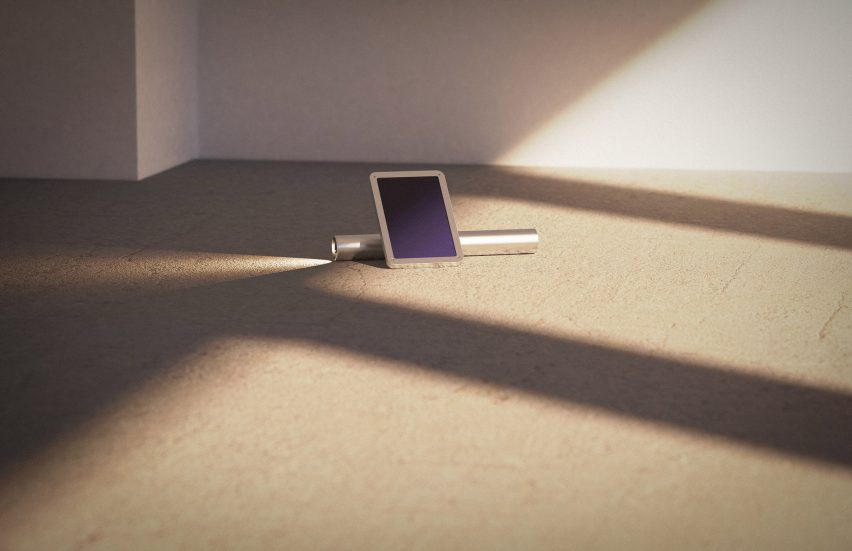
Designers are increasingly working to integrate photovoltaic cells into products so they can generate their own power, rather than having to rely on the grid or external solar panels.
Dezeen explored this shift in its recent Solar Revolution series, which highlighted key innovations from photovoltaic textiles for buildings to solar-powered vehicles.
A light that never goes out is on show from 22 to 30 October as part of Dutch Design Week 2022. See Dezeen Events Guide for an up-to-date list of architecture and design events taking place around the world.